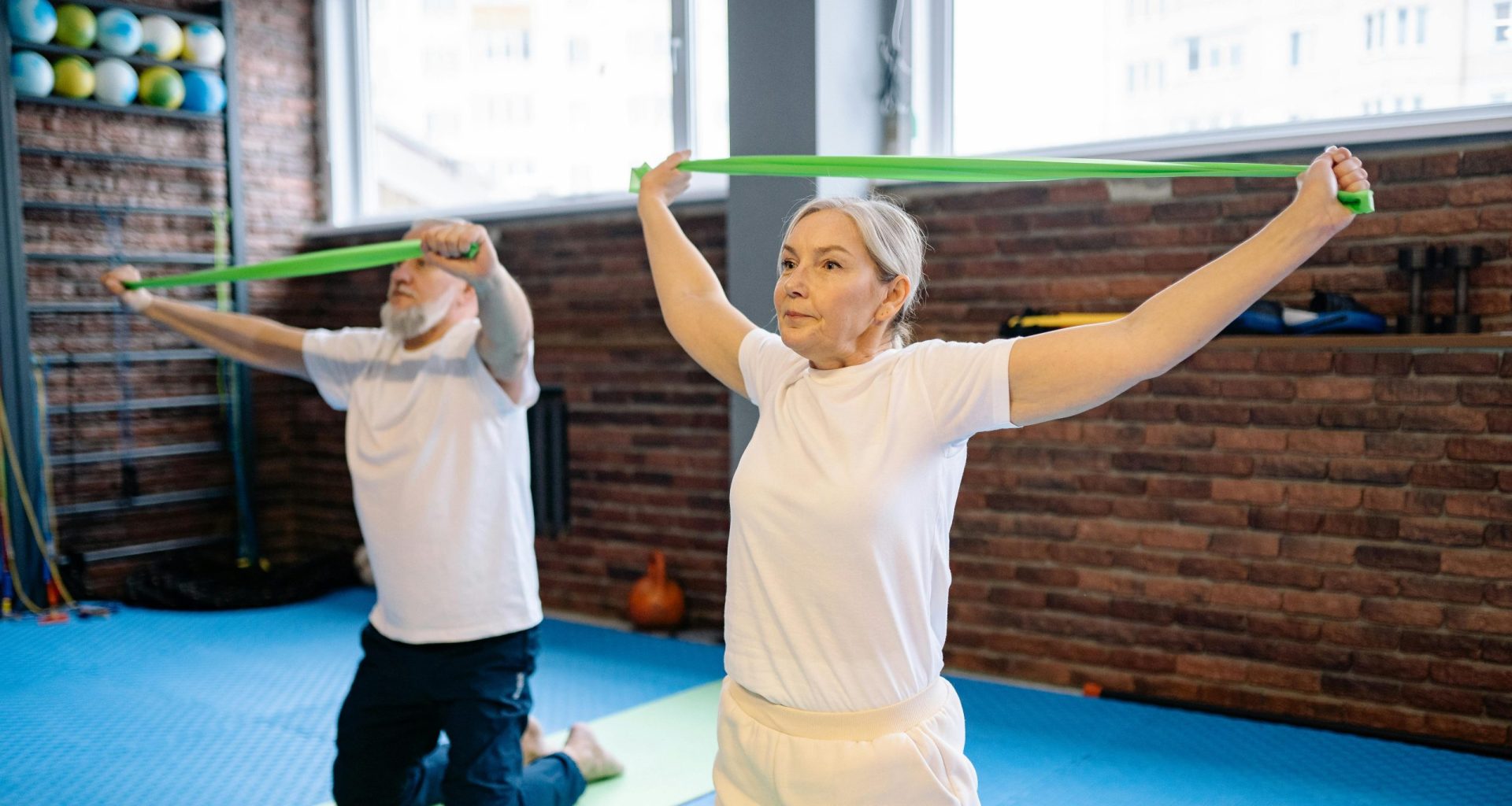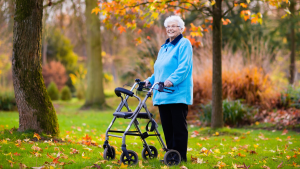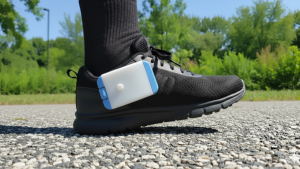Aging is an inevitable part of life, but losing your muscles doesn’t have to be. Loss of muscle can happen at any age, but by age 50, you could be losing 1-4 per cent of your muscle mass each year. Essential for balance, doing the activities you love, performing everyday tasks, maintaining your independence and more, strength training allows you to live a vibrant life with fewer falls and health complications.
Weightlifting isn’t just a young persons game. Research has proven that you can build muscle at any age, including your 90s. One study even suggests that seniors may be able to initially build muscle faster than younger people can.
Hebrew Rehab launched a breakthrough study in the late 1980s where a group of 90 year olds were asked to commit to a high intensity strength training regimen. Starting with just one exercise, weighted knee extensions, a couple times a week, the study proved that strength training is both safe and beneficial for seniors.
It showed that not only can loss of muscle mass be delayed through strength training, but it can actually be reversed.
Study researcher Maria Fiatarone said in a published interview, “when you go to a nursing home, it’s quite clear that people can’t do lots of kinds of aerobic exercise. Simple walking is really hard. Yet people can sit at a machine and lift heavy weights. It’s very much the opposite of what people think.”
Accounting for almost 20 per cent of the population, seniors make up 47 per cent of health spending in Canada. Could lifting weights ease healthcare costs and increase quality of life?
Do You Lift?
Strength training can help you hold onto muscle and bone mass for longer. More effective than walking or light cardio, strength training can help to build muscle and stave off conditions like sarcopenia.
Sarcopenia: age-related progressive loss of muscle mass and strength. Up to 13 per cent of Canadians age 60-70 have sarcopenia; rises to up to 50 per cent for Canadians age 80 and older.
Not only will you look your best, but you’ll feel your best. The post-workout glow, energy and motivation cannot be beat. Everywhere you go, you’ll look and feel like your most powerful you. More than that, studies have shown that strength training has many benefits to your physical and mental health including:
Chronic Conditions:
- Cardiovascular disorders
- Cancer
- Diabetes
- Heart disease
- Osteoporosis
- Arthritis
- Neurodegenerative diseases
Age-related Conditions:
- Sarcopenia
- Postural control
- Preventing falls
Mental Health:
- Depression
- Anxiety
- ADHD
- PTSD
Sarcopenia isn’t the only age-related condition to consider. Osteoporosis can also be delayed or prevented by exercise.
Avoiding Alzheimer’s Through Strength Training
Although genetics play a role in one’s risk of developing many diseases, scientists are realizing that lifestyle is much more important.
Even for neurodegenerative diseases, such as Alzheimer’s, a healthy lifestyle can be an effective way to prevent or delay mental decline. Researchers estimate that 54 per cent of the risk factors are preventable; physical activity is the biggest factor you are in full control of.
Physical exercise, such as strength training, “could improve cognitive functions, such as attention, processing speed, executive function, and memory,” according to a study. It continues that fitness and muscle strength is associated with better cognition at any age.
Curious about your cognitive abilities? Take a quick online test!
A Recommended Workout
Hebrew SeniorLife recommends the following workouts for people aged 50 or older. Start slowly and work yourself up to more intense workouts.
Strength:
- Lifting weights or working with resistance bands
- Doing exercises that use your body weight for resistance (i.e. push-ups, sit-ups)
- Heavy gardening (i.e. digging, shoveling)
- Some forms of yoga
Balance
- Walking backward
- Standing on one leg
- Chair yoga
- Evidenced-based programs like Tai Ji Quan: Moving for Better Balance
If you don’t own equipment and don’t want to buy any, you can put together weights on your own. You can pack cans, water bottles, or (my tried and true method) books into a backpack that you can wear either on your front or back.
Make sure to have a spotter when exercising, especially with weights. It’s important to always lift safely. If you’re choosing to do a workout program at a gym, make sure the trainer is knowledgeable and trained to work with seniors.
How to Get Started with Strength Training
The first step, of course, is the hardest. Sometimes, it feels impossible to stick to an exercise regime; doing it alone is even harder. Many exercise programs designed for seniors are group classes, meant to keep you social and engaged. There are a few routes you can take to start your exercise journey.
You can look for provincially run programs like Get Up and Go in British Columbia which are specifically designed for seniors and are run in partnership with local health authorities. There is typically an entrance fee to these programs, but cost may be subsidized provincially.
Programs:
British Columbia
Get Up and Go: A 6-week long paid program. The cost may be subsidized by Fall Prevention BC.
Manitoba
Stepping Up with Confidence. A free peer run program to support fall prevention and independence.
Saskatchewan
Forever… In Motion. A volunteer led program designed to prevent falls and injuries.
Alberta*
No seniors exercise program offered. The Alberta Healthy Living Program gives insights into health and exercise organizations in the province.
Ontario*
No seniors exercise program offered. The Fall Prevention Program gives insights into health and exercise organizations in the province.
Newfoundland and Labrador
Active For Life. An 8-10 week long program that costs $135.
Nova Scotia*
No seniors exercise program offered. SHIFT gives insights into health and exercise organizations in the province.
New Brunswick
Zoomer in Balance. A free 12-week long program that runs four times a year.
Grouille ou Rouille. A low cost (averaging $2/class) 12-week long program that runs twice a year.
Northwest Territories*
No seniors exercise program offered. The Active Living Framework gives insights into health and exercise organizations in the province.
Yukon*
A seniors exercise program does not yet exist, but the Aging in Place Action Plan has a medium term goal (seen on pg. 10) to create a virtual exercise program for those 50+.
Canada*
No seniors exercise program offered. The Let’s Get Moving Action Plan gives insights into health and exercise goals for the country.
*The province/territory does not offer an exercise program. Instead it has an overarching initiative that supports organizations in implementing goals and strategies related to health and exercise. It may or may not target seniors directly.

Alternatives
Find a senior activity centre. Located all over the country, senior activity centres run group classes for seniors and usually have a bunch of different options. This could include chair yoga, fall prevention programs, or even line dancing classes.
Hire a personal trainer at a gym. Some personal trainers specifically work with seniors and are extensively educated on how to ensure the program they make for you is safe and effective. To find a qualified trainer, call your gym of choice and ask if they have any staff trained for exercise and aging. You can participate by yourself or with a friend to add that extra dose of motivation, fun, and maybe even competition.
You can even workout from the comfort of your home following free exercise programs designed by Senior Adult Fitness Exercises. Starting with low intensity exercises, by level four you’ll be capable of vigorous exercise for up to 30 minutes.
Live Life Comfortably
It’s never too late to start working out. Strength training isn’t about aesthetics or lifting heavy weights—it’s about reclaiming control over your health, mobility, and independence.
The benefits are clear. Building and maintaining muscle can help you prevent chronic diseases, reduce your risk of falls, and even protect your brain health as you age. So whether you’re 30, 60, or 90, now is the perfect time to start.
With a myriad of benefits, strength training can help you become your strongest and most independent self.
~ Read more from The Health Insider ~
- Beyond the Cane: The 5 Top Mobility Devices for Independence and Faster RehabTired of tripping? Discover the 5 essential devices that help retrain your stride—from high-tech AFOs to stable rollators.
- This Simple Wearable Is Helping Seniors Walk With Confidence AgainA Montreal-made wearable helps older adults walk with confidence and reduces their risk of falling.
- Aging Isn’t All Decline: Study Shows Many Older Adults Rebound From Health SetbacksAccording to a new Canadian study, nearly 1 in 4 older adults improved their health and happiness in just 3 years after experiencing a health setback.
The information provided on TheHealthInsider.ca is for educational purposes only and does not substitute for professional medical advice. TheHealthInsider.ca advises consulting a medical professional or healthcare provider when seeking medical advice, diagnoses, or treatment. To read about our editorial review process click here.













